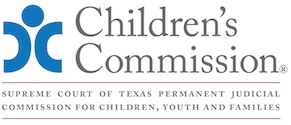A. What Is Permanency Care Assistance?
The Permanency Care Assistance (PCA) Program provides certain benefits and supports to qualifying kinship families who take permanent managing conservatorship (PMC) of a child. Tex. Fam. Code Chapter 264, Subchapter K and Tex. Admin. Code Title 40, Chapter 700, Subchapter J, Division 2 set out the requirements for PCA.
Caregivers who receive PCA are eligible for:
• Monthly cash assistance similar to adoption assistance;
• Medicaid health coverage on behalf of the child; and
• A one-time reimbursement of nonrecurring expenses, including legal fees, incurred in the process of obtaining custody of the child, up to a maximum of $1,200. Tex. Fam. Code § 264.852(d) and 40 Tex. Admin. Code § 700.1025.
The maximum monthly payments are the same as those for adoption assistance and depend upon the child's authorized service level at the time the PCA is negotiated. 40 Tex. Admin. Code § 700.1039(c)-(d). Factors that are considered when negotiating the amount of monthly PCA to be made include:
• The child's present need for services in relation to the permanent kinship conservator's income, expenses, circumstances, and plans for the future;
• Benefits needed to assist the permanent kinship conservator in meeting the child's needs and the permanent kinship conservator's responsibilities for meeting those needs;
• Any and all sources of income and support that are specifically designed for the child such as Retirement, Survivor, Disability Insurance (RSDI), or Veteran's Administration (VA) benefits;
• Whether a publicly funded source may be sued to meet the child's needs, even if the permanent kinship placement does not choose to take advantage of the publicly funded source; and
• The actual or estimated costs of meeting the child's medical needs that cannot be met through private insurance or Texas Medicaid. 40 Tex. Admin. Code § 700.1039(b).
The maximum monthly amount of assistance payments under a PCA agreement may not exceed the amount of the monthly foster care maintenance payment DFPS would pay to a foster care provider caring for the child for whom the kinship caregiver is providing care. Tex. Fam. Code § 264.854.
Special Issue: There may be additional funding for enhanced PCA benefits but this will depend on the availability of funds and is not required by the Family Code.
Caregivers who apply must be:
• Related to, or have a longstanding relationship with, the child / children before the child is placed. 40 Tex. Admin. Code § 700.1029(b)(1); and
• Verified by a child placing agency and provide verified foster care for the child in the managing conservatorship of DFPS for at least six months after verification pursuant to 40 Tex. Admin. Code § 700.1031(c) and before the court awards PMC and dismisses the case. 40 Tex. Admin. Code § 700.1029(b)(2).
DFPS may enter into a PCA Agreement with a kinship provider who is the prospective managing conservator of a foster child only if the kinship provider meets the eligibility criteria under federal and state law and DFPS rule. Tex. Fam. Code § 264.852(b). A court may not order DFPS to enter into a PCA agreement with a kinship provider unless the kinship provider meets the eligibility criteria under federal and state law and DFPS rule, including the requirements relating to criminal history background check of a kinship provider. Tex. Fam. Code § 264.852(c).
Special Issue: The Health and Human Services Commission (HHSC) must allow a child-placing agency to issue a provisional license for a kinship provider who meets the basic safety requirements provided by Commission rule and the kinship provider issued a provisional license shall complete all licensing requirements within the time provided by the rule.
If a sibling is placed by DFPS in the same home of a child who is already the subject of a PCA agreement, the caregiver automatically meets the definition of relative or fictive kin. If the caregiver and DFPS agree on the appropriateness of the arrangement and, if DFPS has TMC or PMC of the joining sibling at the time the agreement is signed, the family must enter into a PCA agreement for the sibling before the court awards PMC of the sibling to the kin/caregiver and dismisses DFPS from the case. 40 Tex. Admin. Code § 700.1029(c).[302]
A caregiver receiving PCA is not eligible for the Relative and Other Designated Caregiver Program. 40 Tex. Admin. Code § 700.1002(b). Relatives who do not meet the eligibility criteria under the PCA program may be eligible for benefits under the Relative and Other Designated Caregiver Program. 40 Tex. Admin. Code § 700.1055.
